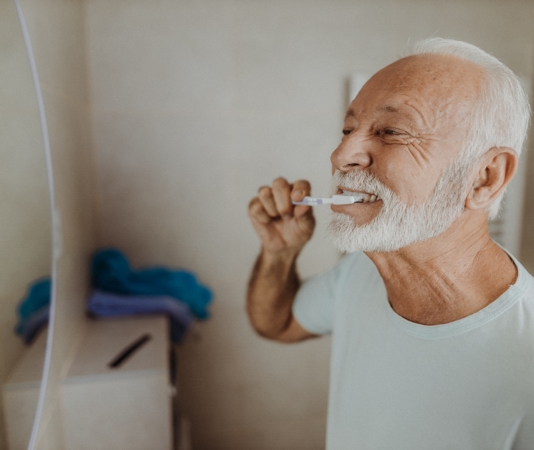6It is a disease that can make every breath difficult and more than 13 million people in the U.S. live with the condition every day. Chronic Obstructive Pulmonary Disease (COPD) causes a person’s airways to become partially blocked. The condition is caused by various different diseases and there is no cure. However, there are ways to better cope with the symptoms.
Providing elder home care services for a person with COPD can be very challenging, but there are steps a caregiver can take that can make the process easier:
1. Practice Communication:
A person living with COPD may often be short of breath – a conversation can literally take their breath away. To help, a caregiver should let the person living with COPD know they do not need to hurry through conversations and they should take time while speaking. A caregiver can also encourage a person living with COPD to talk in short phrases or sentences. Above all, make sure they know it is OK to pause whenever they need to avoid putting too much strain on their lungs.
2. Stay Organized:
Organization is a good way to maximize a person’s ability when they live with COPD. By putting the more strenuous activities early in the day, they can accomplish them while they have the most energy. Additionally, the entire home can be organized in a way that regularly used items are easier to get to. It is helpful to have duplicates of frequently used items around the home so a person has to do less searching and carrying items from room to room. For example, keep a trash can in each room, and keep one vacuum cleaner upstairs and another downstairs.
3. Assist them in Conserving Energy:
When a person living with COPD becomes breathless, it can be scary. They cannot catch their breath and do not know when it will end. Controlling the pace of activities can help them avoid losing their breath and they can also practice several energy conservation techniques:
- Maintain good posture and avoid too much strenuous bending or lifting.
- Practice ways to relax. When a person focuses on relaxing their muscles and slowing down their breath it can restore energy to the entire body.
- Plan out rest periods and avoid any unnecessary activities. For example, if they can use a terry cloth robe after a shower, they do not have to make the effort of drying off with a towel.
- Give them permission to ask others for help. If there is something that will obviously put a strain on the body, it’s important they know others can do the task instead. For example, it is not a good idea for a person living with COPD to scrub floors or move furniture just because they did these chores in the past. A caregiver can help.
4. Create a Safe Environment:
A person living with COPD can be more vulnerable to the environmental factors in their surroundings. A home full of dust can affect their ability to breathe, and their often weakened state raises their risk for a dangerous fall. A caregiver can go through a home, room by room, to find and remove any possible hazards. Dangers to look for include:
- Throw rugs on the floor and other tripping hazards like electrical cords.
- The absence of safety bars in bathrooms, showers, and along walkways both inside and outside the home.
- The lack of lighting around a home.
Other good tips to help create a safe environment include keeping a person living with COPD away from a smoker and ensuring any emergency numbers are in a highly visible location.
5. Control Meals:
Because many people with COPD can become short of breath while eating, it can lead to malnutrition. Furthermore, the muscles a person uses to breathe burn 10 times the calories in a person with COPD, so a person with the condition already needs to consume more calories. To ensure calorie intake levels are high enough, caregivers can help a person living with COPD eat safely. Here are a few best practices:
- Rest and store up energy before a meal.
- Avoid foods that require a lot of chewing
- Eat slowly and make sure there is no need to rush through a meal.
- Eat small, more frequent meals through the day because fewer, larger, meals require more effort.
6. Exercise:
Because of the many benefits of exercise, it is still recommended for a person who is often short of breath. Exercise maximizes the body’s use of oxygen and improves breathing. Exercise also helps the heart, lowers blood pressure, helps circulation, and builds up energy. A caregiver should encourage a person living with COPD to stretch and focus on breathing exercises to stay safe while exercising.
7. Plan Ahead for Trips:
When a person with COPD goes anywhere, ranging from a trip to an appointment in the car, to longer vacations on a plane, they should be sure to bring along everything they will need. This includes any medications or oxygen. Before a plane trip, a caregiver can talk with the airline because some do not allow oxygen on board unless a person has a prescription and/or a doctor’s letter. The change in altitude may also alter how much oxygen a person needs, so it’s a good idea to talk with a health care provider before the trip.




.1803151925550.jpg)
